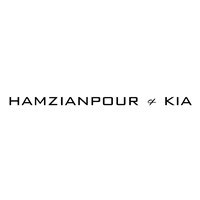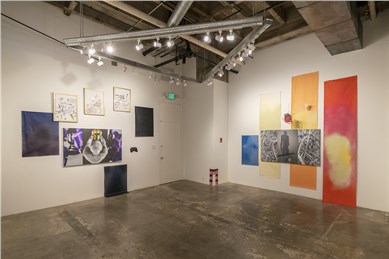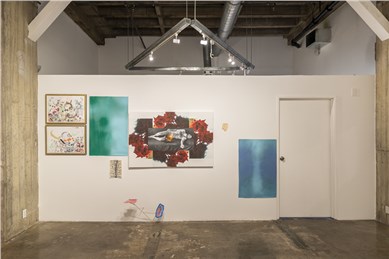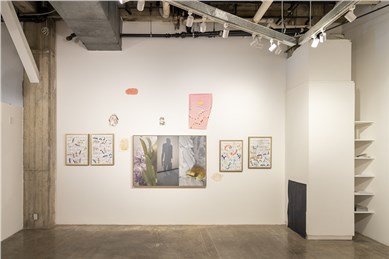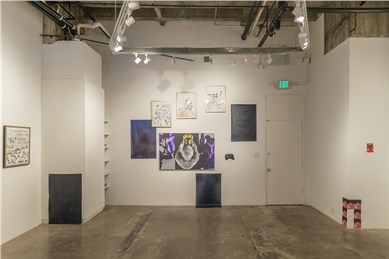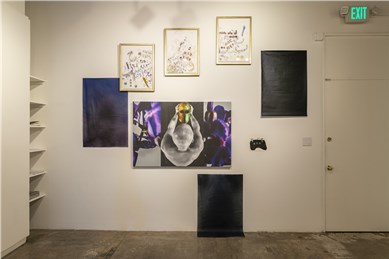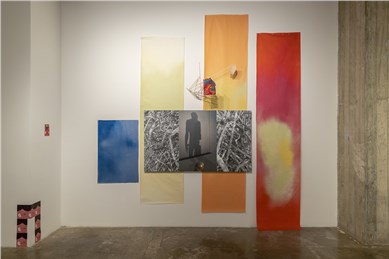29 Oct - 26 Nov, 2022

Statement:
Hamzianpour & Kia is pleased to present Minefield Playground, a two-person show by Fereydoun Ave and Sam Samiee, on view October 29 - November 26, 2022. This is the first joint exhibition for the two artists. The show consists of two series by Ave - Warrior’s Rest and Two Alphabets - installed by Samiee and in dialogue with the latter’s own site-specific works, which are created in a short time span in the days before the exhibition opening.
Warrior’s Rest is part of Fereydoun Ave’s ongoing Warrior series, which has continually problematized the relationship between the warrior archetype and its historical, literary, and mythological iterations. All along, Ave has rigorously questioned and subverted the definitions of masculinity embodied by the warrior, cultivating a tense relationship between the macho characters in the works and the decidedly non-macho elements that surround them.///
In Warrior’s Rest, the warriors are once again depicted with iconography that interrogates the hardness and harshness traditionally associated with masculinity; however, the overarching sensation here is not one of tension but, as the series’ title suggests, a restfulness. The warriors are presented in various states of repose, stripped of all forms of armor (literal and figurative), naked and prone yet fully at rest. Their bodies and the objects around them – flowers, bedsheets, carpets, plants – exude a softness and sensuality that goes beyond previous works in the Warrior series. Even the helmet, a powerfully iconic element of the warrior image, is treated with affection – an ever-present partner whose place is no longer on the hero’s head and so can no longer mask the warrior’s individual identity or obscure his humanity. As such, these works constitute an expression of Ave’s wish “that men will tire of war and from time to time want to rest.” In some instances, Ave goes so far as to reduce the warrior to a mere shadow, an absent presence, ephemeral and ethereal – nothing more and nothing less than an idea that materializes briefly and then recedes out of materiality.The same interplay of material and immaterial informs the show’s other series by Ave, Two Alphabets. While alphabets are the material dimension of language – its building blocks, as it were – Mr. Ave treats them in a way that both acknowledges and vitiates their materiality. The alphabetical letters are stripped of their primary function (communication) and endowed with the freedom to PLAY. Crucially, the letters are arranged so as to resist any kind of a reading – literal or figurative – and empowered to behave independently of any imposed or expected functionality. As Roland Barthes has said of the work of Cy Twombly (who was in fact, one of Ave’s mentors), the letters are presented with a kind of indolence, like a garment that has been worn and deposited on the floor – though Ave’s approach to the alphabet is an indolence born not of sloth but of a deliberate playfulness, a desire to let their graphic (rather than iconographic) essence emerge. This allows the two alphabets - Latin and Perso-Arabic - to enter into a spirited dialogue, emanating an intimacy which foregrounds the fact that they are both branches of the same (Indo European) language tree.
Ave has often presented his work in the form of co-operative shows, and for this show he has called on Sam Samiee to create an installation incorporating both artists’ work. Samiee’s own work is characterized by a break from the tradition of flat painting and a return to the question of how artists can represent the three-dimensional world in the space of painting as a metaphor for a set of ideas. In designing this exhibition, Samiee treats the gallery as an editable space whose possibilities and limitations can be used, manipulated, and unmade as the artist sees fit. Samiee considers the work of installation as a performative act; and indeed the entire show becomes a performance that immerses viewers in the environment, incorporating them as co-performers in a work whose scale far exceeds the sum of the physical objects present. Using both two-dimensional media and spatial objects, Samiee amplifies the sense of beauty and color in Ave’s pieces while simultaneously mediating and altering the gaze that is directed at those pieces -- pushing viewers to be present to their own presence in the gallery space and to their own part in creating a discursive relationship with the individual works and with the exhibit as a whole.In his work, Samiee endeavors to synthesize the visual culture of the West with the heavily word-centered culture of the East; his approach is grounded in part in his research and lectures on Iranian art history and the ways in which Iranian modernists reconciled the new canons of Western art with their local frameworks of art production That research has brought him to contemplate and find insight into the role of Fereydoun Ave within Iranian art history and his contribution to the evolution of Global Modernism -- a subject which Samiee further engages with and elucidates in this show. In addition, Samiee highlights how Ave’s work celebrates the fascination with male beauty, referencing in particular the Greek notions of the masculine ideal while at the same time pointing out an ugliness behind the machismo of war and destruction – intensifying the poetic aspects of awe and dejection one finds in masculinity and its attendant beauty.In Ave’s pieces, images are conjoined to create scenographic essays; and so Samiee’s work here can be read as a scenography of scenographies, hinting at a fractal relationship between the two artists and their work. In this way Samiee ramps up the playfulness and evades what he calls “the mine-field of the mind-field” – the temptation for artists to think too much about what parts of the collaborative work are “mine” and what parts are not.Fereydoun Ave (b. 1945, Tehran) is one of the most influential individuals in Iranian contemporary art and his prolific efforts cover various formats. He received his BA in Applied Arts for Theatre from Arizona State University and studied film at New York University. During his career, which spans over five decades, he has successfully taken many different roles, including artist, designer, art director, collector, curator, gallerist and art patron. His artworks have been featured in many solo exhibitions and hundreds of group shows in galleries and museums all around the world. Ave’s work has been acquired by prestigious art institutions, including The British Museum in London, The Metropolitan Museum of Art in New York, Los Angeles County Museum of Art (LACMA), Centre Georges Pompidou in Paris, Cy Twombly Foundation and Tehran Museum of Contemporary Art (TMOCA) as well as many notable private collections.Sam Samiee (b. 1988, Tehran) is a painter, essayist, and psychoanalyst in training who finished his Rijksakademie residency in 2015 and ArtEZ AKI in 2013. His primary education in arts began at the University of Arts in Tehran, first in Industrial design and then painting. He is a jury member of the Dutch Royal Painting Prize from 2020 to 2024 and the Wolvecamp Prize in 2022. Respectively, he was the winner of those prizes in 2016 and 2018. He synthesizes his research on art history, Persian poetry, and psychoanalytic theories into a studio practice that employs painting in multiple registers. He has exhibited his works at the 10th Berlin Biennale, Kunstmuseum, the Parasol unit Foundation, and Manchester Art Gallery.
Artists



